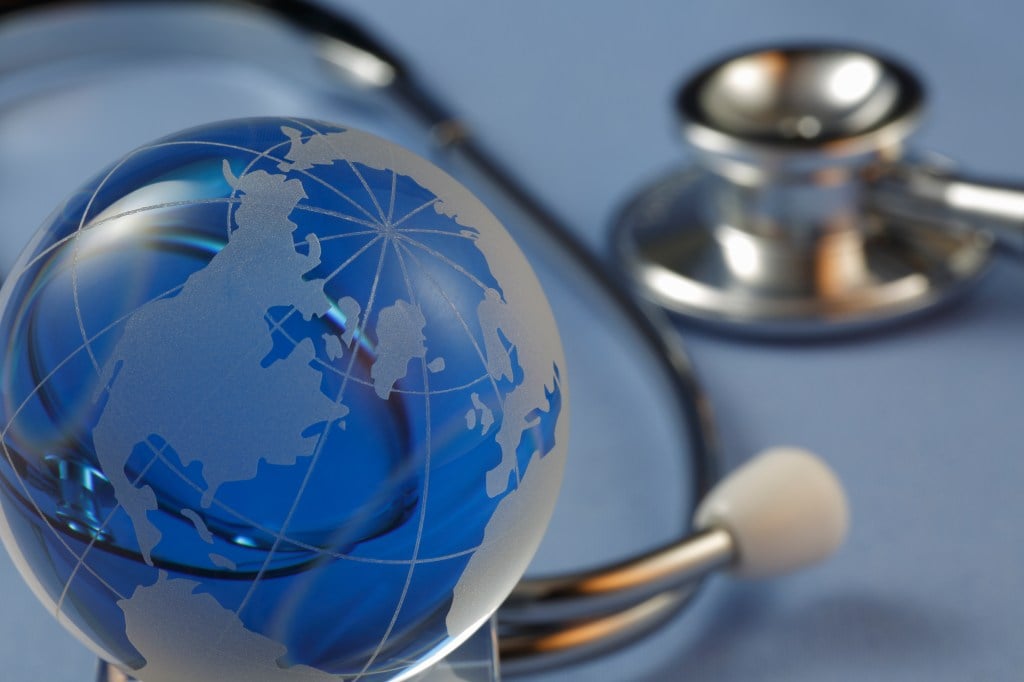The Time to Fight Antimicrobial Resistance is Now
The toll of superbugs capable of outwitting the current armory of treatments, including antibiotics, is accelerating.

By Dame Sally Davies, Hemant Ahlawat, and Shyam Bishen
The toll of superbugs capable of outwitting the current armory of treatments, including antibiotics, is accelerating. Antimicrobial resistance (AMR) is already the third leading cause of death globally, associated with 4.95 million premature deaths in 2019, higher than HIV/AIDS or malaria—a figure that could rise to >10 million by 2050.
The World Health Organization’s latest review into the pipeline of new drugs shows a hole in products addressing drug-resistant pathogens. We face a very real risk of returning to a pre-antibiotic era where routine bacterial infections from simple wounds, urinary tract infections, or sexually transmitted infections could again become life-threatening. AMR also carries a hefty economic cost. The World Bank estimates the economic impact of unmitigated AMR could decrease annual global GDP by 1.1-3.8 percent by 2050.
This September the United Nations General Assembly’s High-Level Meeting (HLM) on AMR is an opportunity to revitalize this fight and chart a path forward. Moving forward on these three actions could enable all actors—public, private and civil society—to create a safer world.
First, it is important close the access gap by ensuring that everyone, no matter where they live across the world, can get the antibiotics they need, especially in low-income countries. This will be underpinned by spurring innovation. The current market for antimicrobials fails to spur R&D, ensure access to new and existing products, and protect against overuse. These three objectives—innovation, access, and stewardship—must be balanced to ensure sustainability and equity. A new combination of “push” and “pull” incentives is essential to generate truly novel antibiotics. Without innovation, our medical armory will continue to dwindle, with more companies leaving the market and slow and insufficient access.
Some governments and private foundations are trying to establish “push” incentives such as CARB-X and GARDP, which provides strategic prioritization and de-risks the R&D process. Pharmaceutical innovators have responded with the creation of the AMR Action Fund, which complements push incentives with financial support to product developers with projects in advanced development. These efforts would benefit from “pull” incentives that reward antimicrobial innovation in line with social value.
On the G7 stage, finance ministers are starting to support and trial pull incentive mechanisms. These potentially ‘delink’ investments in R&D from sales volumes and price, which can create a viable market while encouraging stewardship, thus trying to fix the market failure that leaves small and medium sized enterprises unable to raise the capital to take their research all the way through product development, licensing and distribution, whilst ensuring access for countries of all income levels.
Everyone would benefit from more countries demonstrating their finance leadership towards a globally meaningful incentive, building on pilots being led by the UK, Sweden, Japan and Canada.
Farming and food processing industries also have a role to play as they evaluate effective antibiotic stewardship. Options could include replacing growth promotion and prophylactic antibiotic use with sustainable, hygienic production methods. Voluntary industry pledges on financial commitments to support neglected innovation, such as supporting or replicating the AMR Action Fund, or on the level of antibiotics used in animal feed, could be a first step.
Secondly, artificial intelligence (AI), including biological design tools, could increase the speed and lower the cost of drug discovery and clinical trials, especially for novel classes of antibiotics and diagnostics. Innovation will also mean working with potential disruptors, including tech companies that have already made forays into drug discovery in partnership with traditional pharmaceutical innovators.
Thirdly, sustainable financing and resources for action are critical to success. Existing global financial institutions and instruments could make it easier for low-income countries to access their funding streams for AMR interventions. In addition to resources for action, we need knowledge: With national, regional and global surveillance mechanisms developed and supported—and crucially, shared globally. Yet knowledge also needs to translate into evidence to drive action. AMR is complex and knows no borders: Resistant microbes spread easily across countries and continents, making it a threat that requires coordinated international efforts to address it effectively. An international, independent panel akin to the IPCC for climate change to review and advise on AMR could be a critical step in addressing this issue. This panel could synthesize existing scientific evidence, have active participation from the Global South, and give recommendations for actions.
We are seeing momentum: To accelerate innovative cooperation models across industries and between industry and government, the World Economic Forum has launched a new Global Futures Council. And this week, stakeholders from across all sectors and countries are convening in New York to share their priorities for the High Level Meeting on AMR this September.
The needs are clear. The High Level Meeting and lead-up is a milestone for companies, governments, and philanthropy to step up the fight against AMR. Governments, the private sector, and other funders could consider strengthening the pipeline across “push” and “pull” and pledge meaningful commitments to reduce overuse and fill the pipeline with new and effective drugs. Pharmaceutical innovators could broaden who is at the table and capture the benefits of AI and other disruptive innovations. Finally, the international community could come together to set up and enable an independent panel to strengthen the evidence base and work across sectors.
Dame Sally Davies is the Special Envoy on Antimicrobial Resistance for the UK, and is the co-Chair of World Economic Forum’s Global Future Council on the Future of Tackling Antimicrobial Resistance. Hemant Ahlawat is a Senior Partner at McKinsey & Company and the co-leader of the McKinsey Health Institute, and a member of the Global Future Council. Shyam Bishen is the Head of the Centre for Health and Healthcare of the World Economic Forum.
